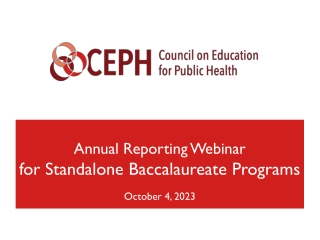
High-Risk Factors Related to Premature and Dysmature Infants
Learn about the high-risk factors associated with dysmaturity in preterm and post-term infants, particularly in the third stage of development. Explore the challenges faced by preterm infants, their diagnostic evaluation, clinical manifestations, and therapeutic management. Understand the incidence and causes of dysmaturity in these vulnerable newborns.
Download Presentation

Please find below an Image/Link to download the presentation.
The content on the website is provided AS IS for your information and personal use only. It may not be sold, licensed, or shared on other websites without obtaining consent from the author. If you encounter any issues during the download, it is possible that the publisher has removed the file from their server.
You are allowed to download the files provided on this website for personal or commercial use, subject to the condition that they are used lawfully. All files are the property of their respective owners.
The content on the website is provided AS IS for your information and personal use only. It may not be sold, licensed, or shared on other websites without obtaining consent from the author.
E N D
Presentation Transcript
High risk related to Dysmaturity Preterm Infants-Post term infants Third Stage Dr. Moustafa Alshammari Child Health Nursing
Preterm Infants Infants born before completion of 37 weeks of gestation are considered preterm or premature regardless of birth weight. These newborns are the largest number to be admitted to the NICU.(neonatal intensive care unit) They have high incidence for complications and to have congenital defects
Incidence Majority of cases the cause is unknown It is common in: In low socioeconomic classes - Multiple pregnancies - Interrupted pregnancy due to placental accidents - Hypertension relater to pregnancy -
Incidence The premature has to adjust to extra uterine life with his immature systems that leads to problems since his systems are not physiologically ready
Diagnostic evaluation: On inspection: Very small with little subcutaneous fat Large head in proportion to body Inactive and relaxed attitude
Clinical manifestations of prematurity: 1. Very small, scrawny appearance 2. Skin: Red-Pink with visible veins 3. Fine, feathery hair, Lanugo on back and face 4. Little or no evidence of subcutaneous fat 5. Head is relatively large to body (continued)
Clinical manifestations of prematurity: 6. Lies in a relaxed attitude 7. Limbs extended 8. Ear cartilage poorly developed 9. Few fine wrinkles on palms and soles 10. Clitoris prominent in females 11. Scrotum undeveloped and non pendulous with and undescended testes 12. Lax, easily manipulated joints 13. Absent, weak or ineffectual reflexes (continued)
Clinical manifestations of prematurity: 14. Other neurological signs are absent or diminished 15. Unable to maintain body temperature 16. Diluted urine 17. Pliable thorax 18. Periodic breathing hypoventilation 19. Frequent episodes of apnea
Therapeutic Management When a preterm delivery is expected the NICU is alerted and the team of neonatal specialists are present at the time of delivery Resuscitation is done if needed in the lobar room the infant is transferred to NICU in an incubator Measurements taken and vitamin K is given (continued)
Therapeutic Management Respiratory support: Apnea mattress Incubator O2 monitoring Temperature regulation: Incubator, and monitoring of temperature, Humidity as recommended (continued)
Therapeutic Management Complications such as hypoglycemia and hypocalcaemia are frequent in the premature infant and are managed according to specific conditions and monitored frequently Respiratory distress syndrome is very common and required respiratory support
Nursing Care Plan of a Preterm Newborn NURSING DIAGNOSIS: Ineffective breathing pattern related to immature respiratory system and respiratory distress as evidenced by tachypnea, nasal flaring, and sternal retractions
Nursing Care Plan of a Preterm Newborn Outcome Identification And Evaluation The newborn s respiratory status will return to an adequate level of functioning as evidenced by rate remaining within 30 to 60 breaths/min, - Maintenance of acceptable oxygen saturation levels, and - Minimal to absent signs of respiratory distress. -
Nursing Care Plan of a Preterm Newborn Interventions: Promoting Optimal Breathing Pattern Assess gestational age and risk factors for respiratory distress to allow early detection. - Assess respiratory effort (rate, character, effort) to identify changes. - Assess heart rate for tachycardia and auscultate heart sounds to determine worsening of condition. -
Nursing Care Plan of a Preterm Newborn Interventions: Promoting Optimal Breathing Pattern Observe for cues (grunting, shallow respirations, tachypnea, apnea, tachycardia, central cyanosis, increased effort) to identify need for additional oxygen. Maintain slight head elevation to prevent upper airway obstruction. Assess skin color to evaluate tissue perfusion. Monitor oxygen saturation level via pulse oximetry to provide objective indication of perfusion status. - - - -
Nursing Care Plan of a Preterm Newborn Interventions: Promoting Optimal Breathing Pattern - Provide supplemental oxygen as indicated and ordered to ensure adequate tissue oxygenation.
Post term infants Infant born after 42 weeks of gestation Incidence: 12% of births Cause: Unknown
Post term infants Post mature (post-term) delivery is much less common than premature (preterm) delivery. The reason for a pregnancy to continue beyond term is usually unknown The placenta becomes less able to provide adequate nutrients to the fetus.
Post term infants To compensate, the fetus begins to use its own fat and carbohydrates to provide energy. As a result, its growth rate slows Its weight may decrease. If the placenta shrinks sufficiently, it may not provide adequate oxygen to the fetus, particularly during labor. A lack of adequate oxygen may result in fetal distress
Post term infants May result in injury to the fetal brain and other organs. Fetal distress may cause the fetus to pass stools (meconium) into the amniotic fluid. The fetus inhale the meconium-containing amniotic fluid into the lungs during birth. As a result, the newborn may have difficulty breathing after delivery (meconium aspiration syndrome).
Symptoms A post mature newborn has dry, peeling, loose skin May appear emaciated, especially if the function of the placenta was severely reduced. The newborn often appears alert. (continued)
Symptoms The skin and nail beds may be stained green if meconium was present in the amniotic fluid. A post mature newborn is prone to developing low blood sugar levels (hypoglycemia) after delivery, especially if oxygen levels were low during labor.
Treatment The post mature newborn who experienced low oxygen levels and fetal distress may need resuscitation at birth. If meconium has been breathed into the lungs, a ventilator may be needed. Intravenous glucose solutions or frequent breast milk or formula feedings are given to prevent hypoglycemia. If these problems do not occur, the major goal is to provide good nutrition so that the newborn can catch up to the weight that is appropriate for him.
Evaluation Recognize common deviations from normal characteristics in the newborn? Perform a systematic assessment of a high-risk newborn? Outline a general care plan for a high-risk infant? Recognize physiologic factors that compromise the preterm infant s health status? Contrast the physical characteristics of preterm and full-term infants? Modify a general care plan to meet the needs of an infant with specific high-risk health needs?
Thankyou You can find me at:

















